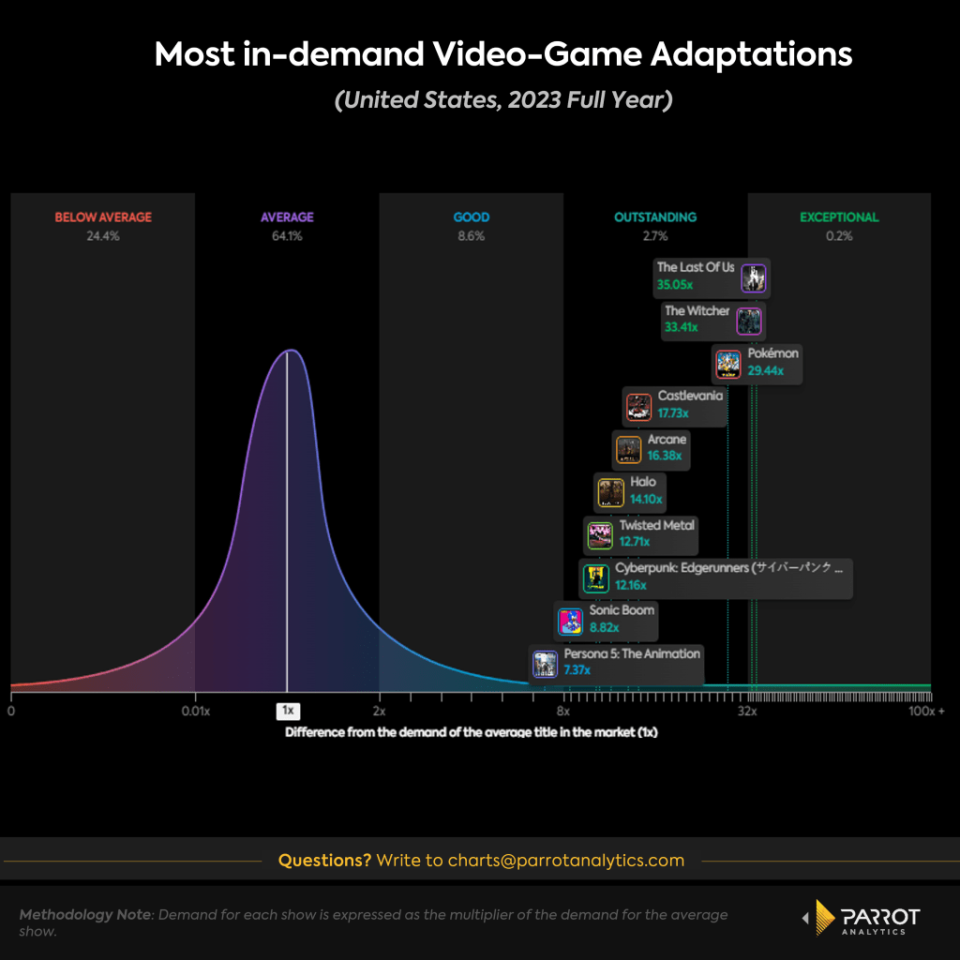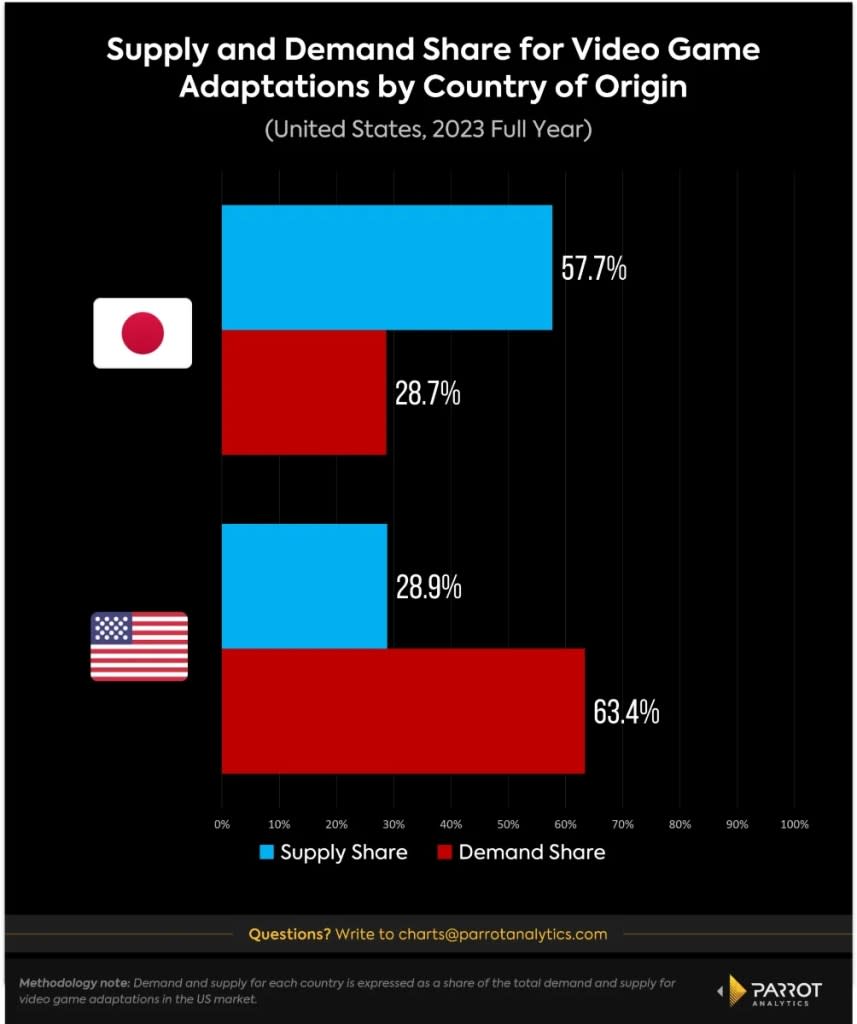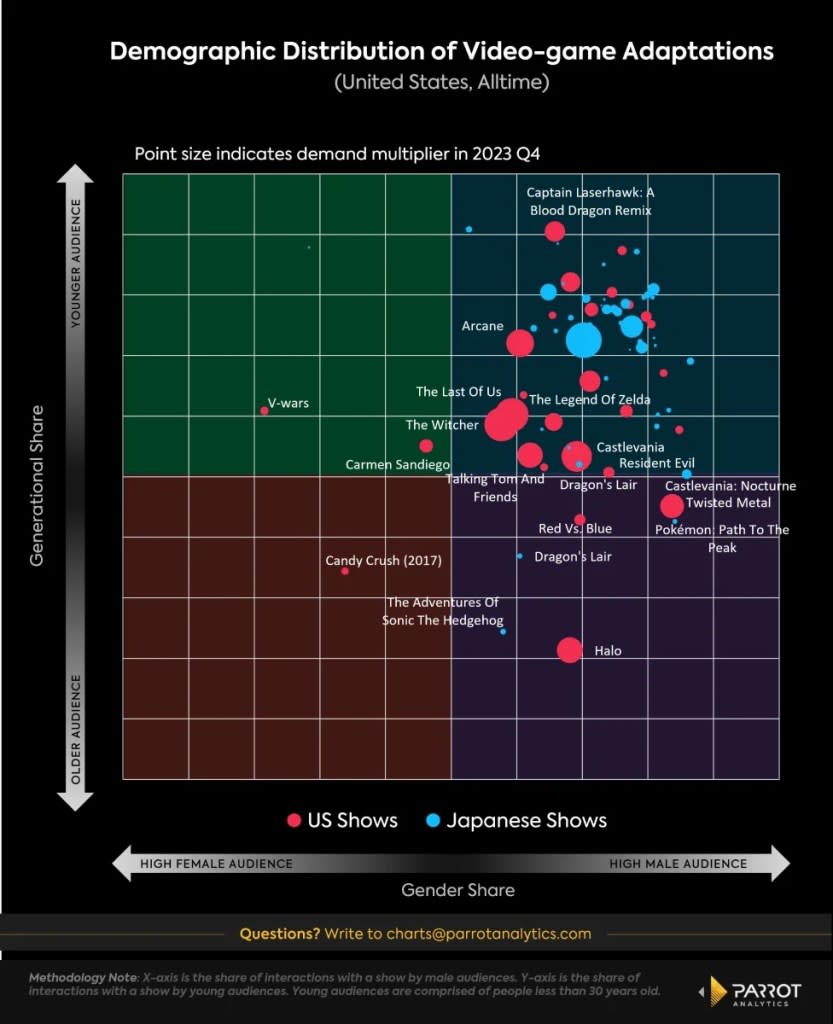Why the US Is Winning the Video Game Adaptation Race Despite Higher Japanese Output | Charts
Networks have long realized that video games have huge potential for engaging TV audiences. From the 1982 “Pac-Man” animated show to Prime Video’s upcoming “Fallout” series, the graphics, storylines and character development in games have significantly improved over time, broadening their fanbase.
After a long period of unsuccessful U.S. video-game adaptations to TV and movies in the past, recent years have seen a resurgence in the genre’s popularity thanks to a string of successes. Of the top 10 most in-demand video-game TV adaptations of all time as of 2023, seven have been released since 2018. Some examples of these shows are HBO’s “The Last of Us” (the most popular video-game adaptation last year), Paramount+’s “Halo” and Peacock’s “Twisted Metal.” All of them are based on popular U.S. video-game franchises.

Among SVOD platforms, Netflix leads in adapting video-games, dominating the top-10 with shows like “The Witcher” (the second most in-demand show based on a video-game), “Castlevania,” “Arcane,” and “Cyberpunk: Edgerunners.”
Japan, alongside the U.S., is globally renowned for its video game adaptations. Two Japanese adaptations are among the top-10 U.S. list. The original “Pokémon” series, first released in 1997, is still highly popular in the U.S. and around the world, as is the more recent “Persona 5: The Animation.”

Japan, which is responsible for 57.7% of video game adaptation supply, produces twice the number of video game adaptations as the U.S. (28.9%). Despite a smaller number of shows, the U.S. adaptations still generate a higher share of the demand in the domestic market at 63.4%, compared to Japanese shows at 28.7%. As is the case for most genres, the few top shows drive the majority of the demand.
Unsurprisingly, video game-based shows predominantly attract young and male audiences, traditionally the biggest consumer group of video games. Yet, analysis of the demographic distribution of these shows reveals notable trends.

First, Japanese adaptations are much more young-male skewed than U.S. ones. Even as some of the most popular U.S. adaptations fall within the top right quadrant, they are more centered than their Japanese counterparts, meaning that they generate (slightly) more universal appeal. For example, shows like “The Witcher” and “The Last of Us” have garnered significant female viewership, exceeding 40%.
Second, an increasing number of shows are appealing to older audiences. The most striking case is “Halo,” a show with an overwhelming share of its audience of more than 30 years old. This may be due to the age of the IP, which first launched in 2001 and has since built a multi-generational fan base. Other shows like “Twisted Metal,” which premiered in 1995, and “Candy Crush” also cater to this same age group. Netflix’s adaptations of “Resident Evil” (which debuted in 1996) and “Castlevania” (1986) nearly achieved a balanced distribution between older and younger viewers.
Given that all of these shows (besides “Candy Crush”) are based on video games released more than 25 years ago, the core audience likely played or interacted with the games early in their release years.
Video games have evolved with more complex storylines and scripts, moving from niche to mainstream. They are no longer a separate type of entertainment, but a valuable source of material and inspiration for the TV industry, with a growing and increasingly broad audience.
Daniel Quinaud is a senior data analyst at Parrot Analytics, a WrapPRO partner. For more from Parrot Analytics, visit the Data and Analysis Hub.
The post Why the US Is Winning the Video Game Adaptation Race Despite Higher Japanese Output | Charts appeared first on TheWrap.

 Yahoo News
Yahoo News 
